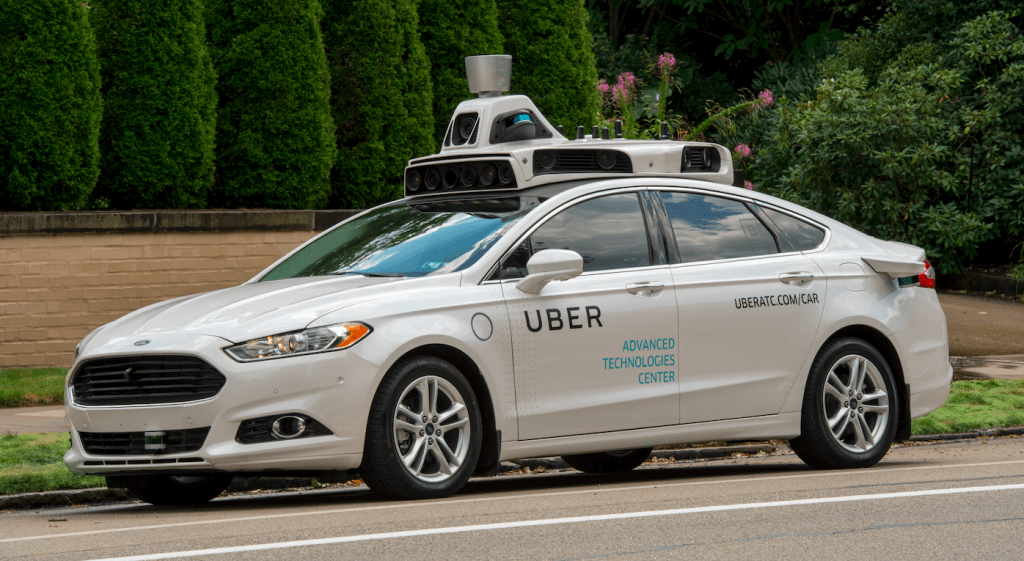 Consumer Watchdog has been observing self-driving cars, their reports and testing. The group is concerned that although Uber claims that its self-driving cars are no longer driving in autonomous mode and are now used for mapping, it is possible that the company is testing self driving and should be monitored.
Consumer Watchdog has been observing self-driving cars, their reports and testing. The group is concerned that although Uber claims that its self-driving cars are no longer driving in autonomous mode and are now used for mapping, it is possible that the company is testing self driving and should be monitored.
Self-Driving Still Not Safe
Disengagement reports from companies testing robot cars on California’s public roads by the Department of Motor Vehicles show the technology is not ready to be deployed without human drivers behind a steering wheel who can take control when the self-driving technology fails, Consumer Watchdog said.
For example, Waymo said its robot technology failed 112 times in 635,868 miles. Delphi reported 178 failures in 3,125 miles. Other companies had huge numbers of disengagments.
Eleven companies with permits to test robot cars in the state were required to file this year. Twenty-one companies hold permits for testing.
“Despite the self-serving hype of the manufacturers, robot technology simply isn’t ready for our roads without hands-on, behind-the-wheel engagement and supervision by a human driver,” said John M. Simpson, Consumer Watchdog’s Privacy Project Director.
The report from Waymo, the new name of Google’s autonomous vehicle unit, demonstrates the shortcomings, Consumer Watchdog said. Its report showed the robot cars had problems dealing with others on the road, construction zones, and correctly perceiving their surroundings. In the past the company has said, for example, that its robot cars had difficulty correctly perceiving overhanging branches. There were also software glitches and times when the test driver took over because the robot car made an unwanted maneuver.
Waymo/Google’s robot cars logged 635,868 miles on California’s roads in self-driving mode during the 2016 reporting period, substantially more than any other company testing in the state. That compares with 414,331 miles in the 2015 reporting period. Waymo/Google said disengagements declined from 341 to 124, or 0.8 per 1,000 miles compared to 0.2 per 1,000 miles. Most of the disengagements – 112 – came on local streets, not highways or freeways.
Delphi reported its two test robot cars drove 3,125 miles in self-driving mode and had 178 disengagements. Reasons given for disengaging included: construction zones, lane changing in heavy traffic, emergency vehicles, poor lane markings, pedestrians, cyclists, failure to detect a traffic light and unexpected behavior from another driver.
“While there has been an improvement,” said Simpson, “the reports show the robots simply aren’t ready to be released to roam our roads without human drivers.”
Consumer Watchdog praised the Department of Motor Vehicles for requiring and posting the disengagement reports.
“It’s the only way the public can find out what’s happening when companies use public roads as their laboratories,” said Simpson. He added that test robot cars involved in an accident should be required to make public video and technical data about the incident.
Other companies with permits to test robot drove far fewer miles than Google/Waymo. Two companies with permits – Honda and Volkswagen — that would have been required to report, had they tested, said they did not. Here are the reports from nine other companies, besides Waymo/Google and Delphi cited above:
- Ford reported three disengagements in 590 miles.
- BMW reported 1 disengagement in 638 miles.
- GM Cruise reported its robot cars drove 10,014.94 miles and had 284 disengagements.
- Mercedes-Benz reported 336 disengagements in 673 miles.
- Nissan reported 28 disengagements in 4,099 miles.
- Tesla said it tested four vehicles in October and November totaling 550 miles in self-driving mode, its report listed 182 disengagements.
- Bosch said its cars drove 980.8 miles and had 1,442 disengagements.
Watch Out for Uber Cars
Consumer Watchdog also called on San Francisco Mayor Ed Lee to ask Police Chief Bill Scott to have police closely monitor Uber’s activities as it brings its robot cars back on the city’s streets, claiming they will now only gather data and not be in self-driving mode.
“Based on Uber’s past performance when they flouted California law and put their robot cars on the road without the required permits from the DMV, there is absolutely no reason to trust the company now,” wrote John M. Simpson, Consumer Watchdog’s Privacy Project Director in a letter to Lee.
The nonpartisan nonprofit public interest group asked the public to report any traffic violations by the robot cars or times when the threaten safety and report them to the group. When Uber put its cars on the road in December without permits – a requirement 20 other companies had no problem meeting – some Uber robot cars were seen driving through red lights.
“If you see something, say something,” Simpson said. Send reports of Uber robot car violations and safety threats to: UberSF@consumerwatchdog.org
“You’ll remember that Uber’s robot cars were observed driving through red lights when they were first deployed and that Uber disingenuously blamed the human test driver. You simply cannot take Uber’s current claim that its robot cars will not be in self-driving mode, only gathering data and that the robot cars will be under human control at all times at face value.” Simpson said.
Consumer Watchdog believes that Uber refused to get required permits from the California DMV because it does not want to share important information about its test activities. California requires companies testing self-driving technology on public streets to file annual “disengagement reports” that explain circumstances when the autonomous vehicle technology failed or the test driver decided to intervene.
When Uber refused to get the necessary permit, the DMV revoked the registrations on the test vehicles. Uber then said it was moving the cars and its self-driving testing to Arizona.
Uber said last week it was bringing some of its cars back to San Francisco for mapping.